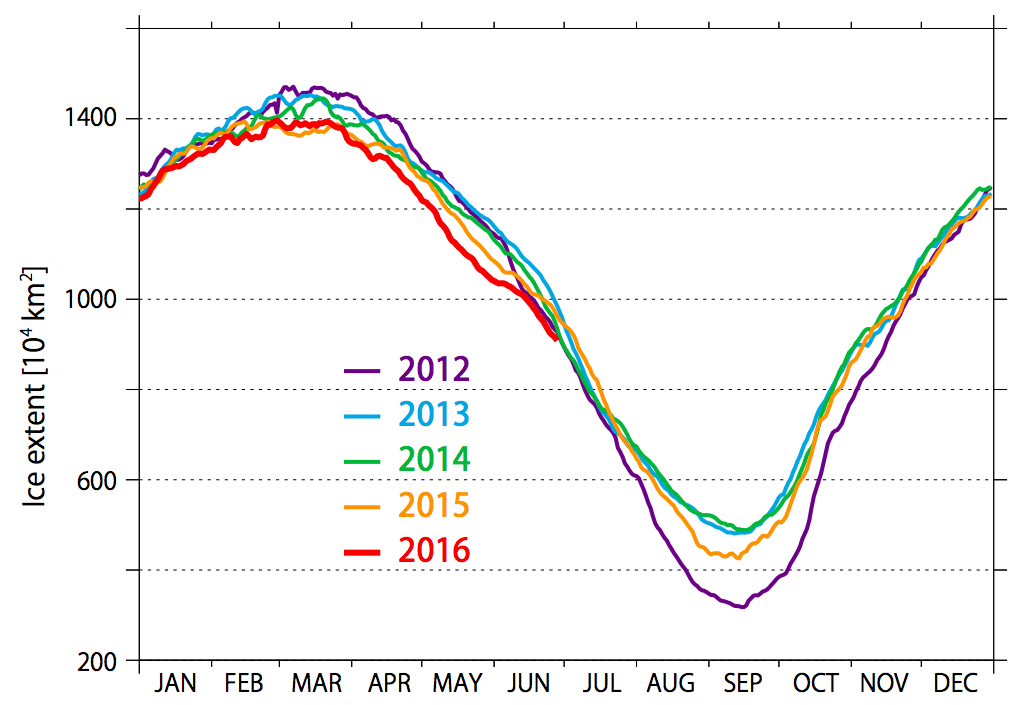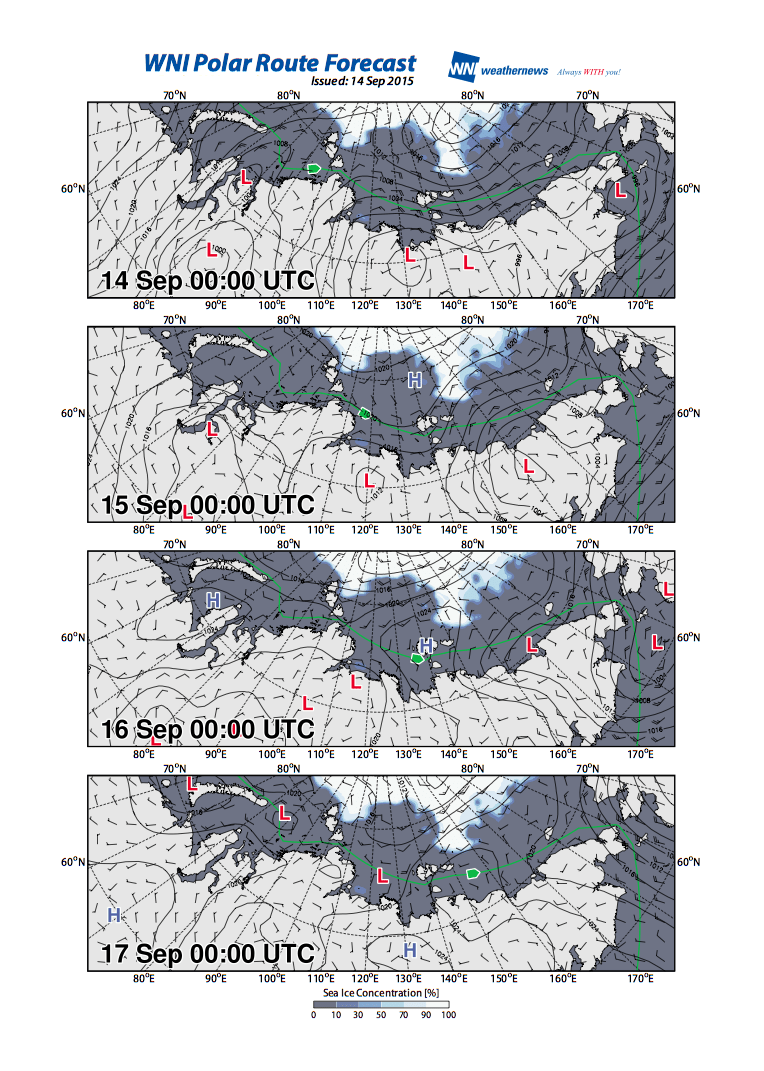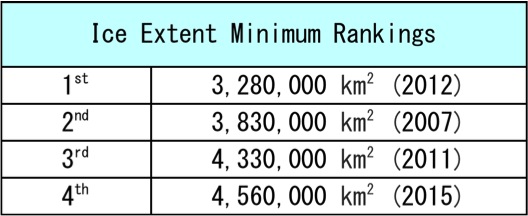News & Press Release
Weathernews Announces 2016 Arctic Sea Ice Outlook
Both Northern Sea Route Passages Opening from Late August
Shipping >The Global Ice Center at Weathernews Inc. (Chiba, Japan; CEO: Chihito Kusabiraki) has released its Arctic sea ice forecast for the summer of 2016. The ice extent in March has reached the lowest ice extent ever recorded in same period for previous years and Arctic ice continues to recede at a fast pace, according to the Global Ice Center (GIC). However, the GIC expects the pace of recession to slow down in the summer due to the effects of thick sea ice across the East Siberian Sea. Weathernews predicts the ice extent will reach a minimum surface area of 4.8 million km2 in September, the fifth lowest ice extent seen since 1979. Also, this season Weathernews expects that both the Northeast and Northwest passages will be clear, so vessels can sail straight through from late August until the beginning of October when the sea ice will return. Commercial voyages and development of natural energy across the NSR have been increasing year after year. Russia’s Northern Sea Route Administration (NSRA) has already granted permission for over 340 voyages through the Northeast Passage so far this year. Due to the safety risks to vessel sailing the NSR, needs for detailed information on arctic ice have been increasing, too. This year Weathernews plans to answer those needs with the launch of the satellite, WNISAT-1R. The addition of WNISAT-1R as sensory data gathering infrastructure is designed to enhance Weathernews’ Polar Routeing Service in order support vessels making voyages through the Arctic Sea.
September Forecast to Be The Fifth Smallest Ice Extent on Record
Northeast and Northwest Passages Expected to Open from Late August

Arctic ice extent typically reaches its annual maximum in March, and minimum in September. This year the minimum ice extent in March reached 13.9 million km2, the lowest ever seen for this period. This shows a trend where arctic ice is receding even in freezing winter temperatures instead of the usual period of melting in the summer. Arctic Sea ice has continued to melt at a record setting pace since March.
Sea ice melting is expected to progress and spread gradually from coastal regions to open waters. However, thick sea ice across bodies of water like the East Siberian Sea combined with little progress in melting here means the pace is expected to slow down in the summer, according to the Global Ice Center. The result is that the GIC predicts the minimum ice extent will reach approximately 4.8 million km2, the fifth lowest area seen in recorded history. The NSR this season is expected to be open* from late August on both passages due to ice melting around the New Siberian Islands and the Canadian Archipelago. Both will stay open as conditions permit until the beginning of October.
*’Open’ is defined as a state (judged to from satellite data) where a vessel can sail the NSR via any passage without hitting sea ice.

Polar Routeing Service Supports Safe Voyages Across the Northern Sea Route
Compact WNISAT-1R Satellite Launch Scheduled for Monitoring Arctic Sea Ice

Weathernews Voyage Planing Team
Arctic observation since 1979 has revealed a clear trend of less and less sea ice to in the Arctic over the long term, increasing attention to the development of the Arctic as a sea lane. In order to sail across the NSR safely, avoiding the risks of sea ice is critical. From 2011 the Voyage Planning Team at Weathernews has been offering Polar Routeing Service to support vessels on voyages transiting the NSR. In addition to information concerning maritime weather conditions like air pressure, wave heights and wind speed/direction provided by Risk Communicators on the Voyage Planning Team, the Global Ice Center at Weathernews analyzes the distribution and concentration of sea ice for customers operating NSR voyages.
Also, this year Weathernews plans to launch an ultra-compact in-house developed satellite, WNISAT-1R. In the future Weathernews is going to further strengthen Polar Routeing Service to support safe NSR voyages by applying the detailed data on arctic conditions from observed WNISAT-1R.

